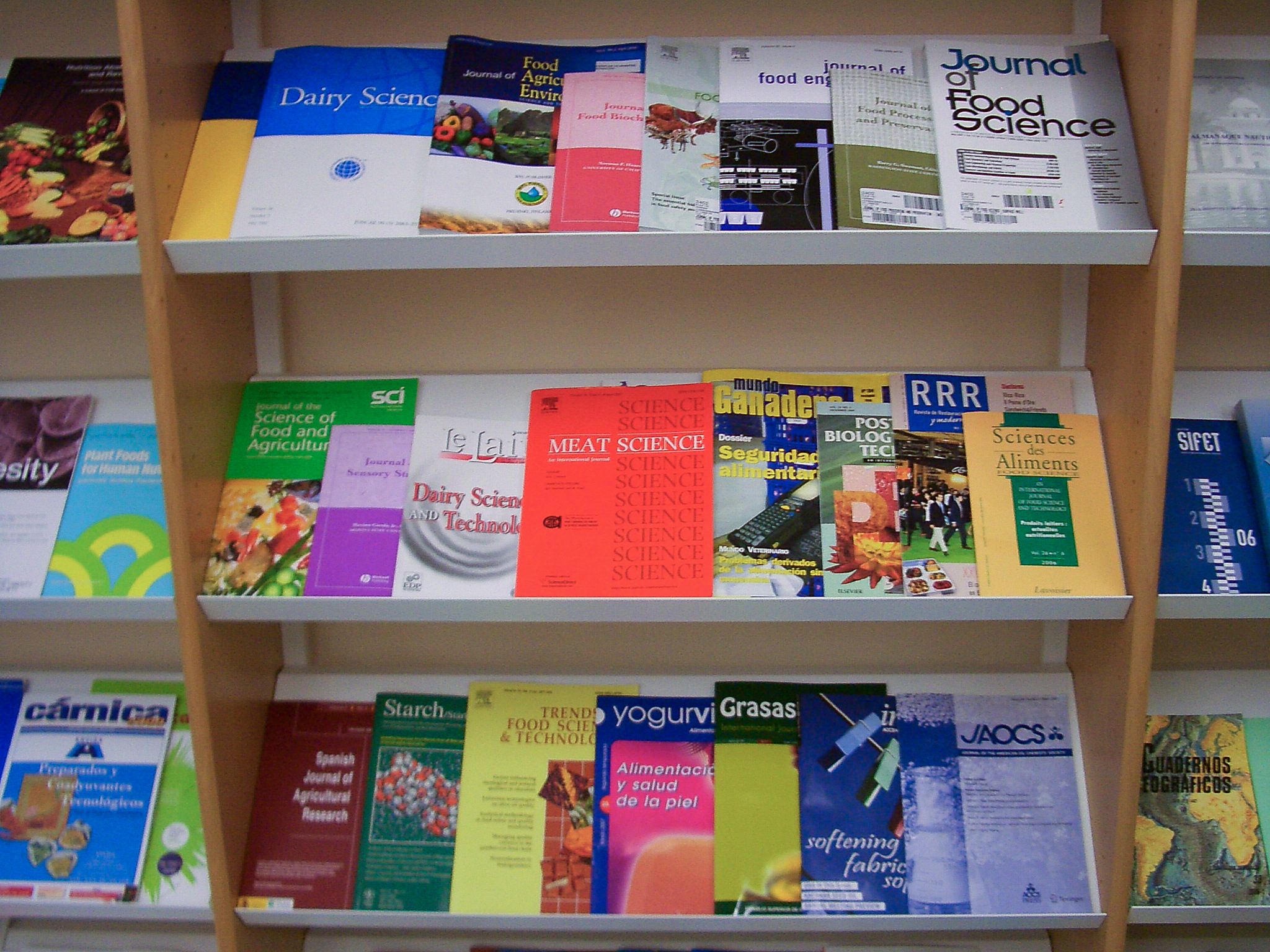
Academic journal
An academic journal or scholarly journal is a periodical publication in which scholarship relating to a particular academic discipline is published. They serve as permanent and transparent forums for the presentation, scrutiny, and discussion of research. They nearly universally require peer review for research articles or other scrutiny from contemporaries competent and established in their respective fields.[1][2]
Concept[edit]
Content typically takes the form of articles presenting original research, review articles, or book reviews. The purpose of an academic journal, according to Henry Oldenburg (the first editor of Philosophical Transactions of the Royal Society), is to give researchers a venue to "impart their knowledge to one another, and contribute what they can to the Grand design of improving natural knowledge, and perfecting all Philosophical Arts, and Sciences."[3]
The term academic journal applies to scholarly publications in all fields; this article discusses the aspects common to all academic field journals. Scientific journals and journals of the quantitative social sciences vary in form and function from journals of the humanities and qualitative social sciences; their specific aspects are separately discussed.
The first academic journal was Journal des sçavans (January 1665), followed soon after by Philosophical Transactions of the Royal Society (March 1665), and Mémoires de l'Académie des Sciences (1666). The first fully peer-reviewed journal was Medical Essays and Observations (1733).[4]
Scholarly articles[edit]
There are two kinds of article or paper submissions in academia: solicited, where an individual has been invited to submit work either through direct contact or through a general submissions call, and unsolicited, where an individual submits a work for potential publication without directly being asked to do so.[10] Upon receipt of a submitted article, editors at the journal determine whether to reject the submission outright or begin the process of peer review. In the latter case, the submission becomes subject to review by outside scholars of the editor's choosing who typically remain anonymous. The number of these peer reviewers (or "referees") varies according to each journal's editorial practice – typically, no fewer than two, though sometimes three or more, experts in the subject matter of the article produce reports upon the content, style, and other factors, which inform the editors' publication decisions.
Though these reports are generally confidential, some journals and publishers also practice public peer review. The editors either choose to reject the article, ask for a revision and resubmission, or accept the article for publication. Even accepted articles are often subjected to further (sometimes considerable) editing by journal editorial staff before they appear in print. The peer review can take from several weeks to several months.[11]
An academic journal's prestige is established over time, and can reflect many factors, some but not all of which are expressible quantitatively. In each academic discipline, some journals receive a high number of submissions and opt to restrict how many they publish, keeping the acceptance rate low.[15] Size or prestige are not a guarantee of reliability.[16]
In the natural sciences and in the social sciences, the impact factor is an established proxy, measuring the number of later articles citing articles already published in the journal. There are other quantitative measures of prestige, such as the overall number of citations, how quickly articles are cited, and the average "half-life" of articles. Clarivate Analytics' Journal Citation Reports, which among other features, computes an impact factor for academic journals, draws data for computation from the Science Citation Index Expanded (for natural science journals), and from the Social Sciences Citation Index (for social science journals).[15] Several other metrics are also used, including the SCImago Journal Rank, CiteScore, Eigenfactor, and Altmetrics.
In the Anglo-American humanities, there is no tradition (as there is in the sciences) of giving impact-factors that could be used in establishing a journal's prestige. Recent moves have been made by the European Science Foundation (ESF) to change the situation, resulting in the publication of preliminary lists for the ranking of academic journals in the humanities.[15] These rankings have been severely criticized, notably by history and sociology of science British journals that have published a common editorial entitled "Journals under Threat".[17] Though it did not prevent ESF and some national organizations from proposing journal rankings, it largely prevented their use as evaluation tools.[18]
In some disciplines such as knowledge management/intellectual capital, the lack of a well-established journal ranking system is perceived by academics as "a major obstacle on the way to tenure, promotion and achievement recognition".[19] onversely, a significant number of scientists and organizations consider the pursuit of impact factor calculations as inimical to the goals of science, and have signed the San Francisco Declaration on Research Assessment to limit its use.
The categorization of journal prestige in some subjects has been attempted, typically using letters to rank their academic world importance.
Three categories of techniques have developed to assess journal quality and create journal rankings:[20]